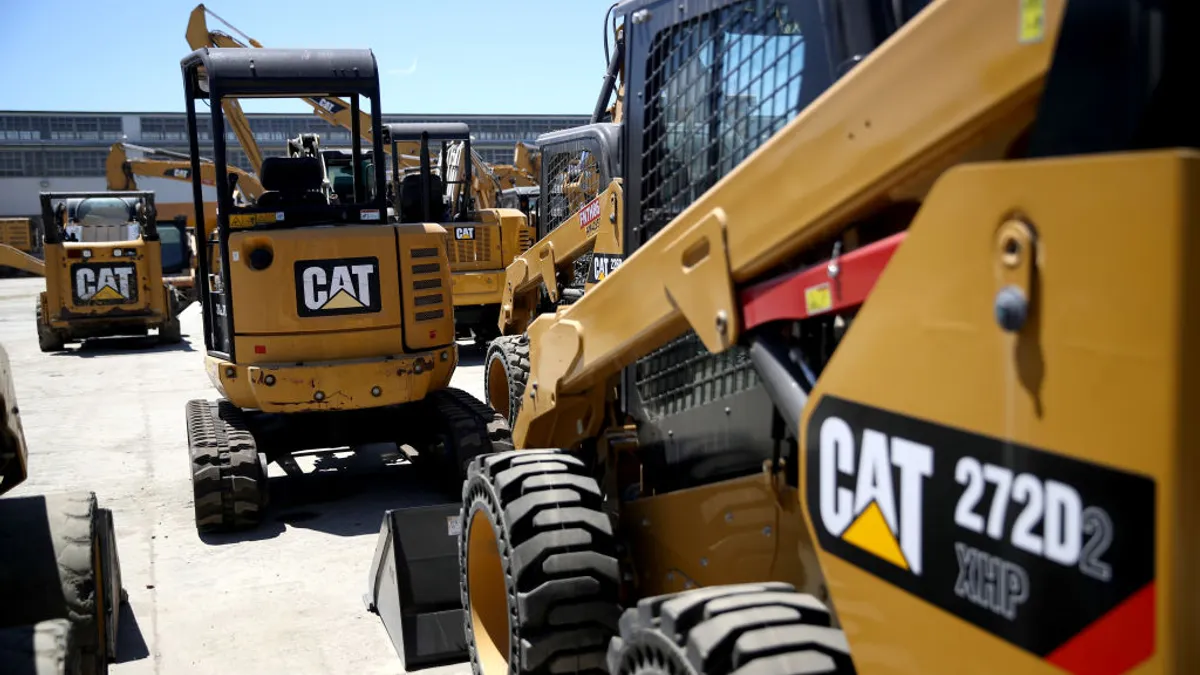Dive Brief:
- A district court erred when it dismissed a former Caterpillar employee’s age discrimination claim because he demonstrated that the performance improvement plan that preceded his firing was “impossible” to complete successfully, the 7th U.S. Circuit Court of Appeals held June 18.
- Per the decision in Murphy v. Caterpillar, Inc., the plaintiff had already once won an age-discrimination jury verdict against Caterpillar after allegedly being passed over for a promotion. The two sides settled and Caterpillar reinstated the plaintiff and agreed not to retaliate against him. Years later, the company allegedly presented the plaintiff with a PIP in which one of the plan’s deadlines had already passed, indicating that the plaintiff had already violated the plan.
- The employee claimed his supervisors denied his request to edit the plan and, instead, signed the portion of the PIP indicating that he failed to meet the deadline. He sued for age discrimination and retaliation. The district court granted summary judgment for Caterpillar, but the 7th Circuit reversed on the age discrimination claim only, holding that the PIP supported a reasonable inference of discriminatory pretext.
Dive Insight:
The Age Discrimination in Employment Act prohibits age-based employment discrimination against applicants and employees who are 40 years of age or older. The plaintiff in Murphy was 58 when his employment at Caterpillar ended, and the three-judge panel of the 7th Circuit noted that he met or exceeded expectations in every evaluation category at the time that supervisors placed him on the PIP.
That the plaintiff was technically in violation of the plan before even agreeing to sign it constituted an oddity that could not be explained away as an oversight, the court said. It added that a jury could infer that the supervisors’ decision to sign the document confirming the plaintiff’s failure to meet the plan before it took effect “signaled to [the plaintiff] that his fate had been decided.”
Quoting a prior decision, the court wrote that “the handwriting may not have been on the wall, but it was certainly etched into the signature block of the action plan, and the axe was poised to fall because [the plaintiff] was already in breach of the plan’s terms.”
Caterpillar offered several justifications for the PIP as well as the termination decision. According to the 7th Circuit, the company told the U.S. Equal Employment Opportunity Commission that the plan was partially prompted by inappropriate comments the plaintiff made to two co-workers. But the court noted that the supervisors testified the PIP was initiated before they learned of the alleged comments.
The company also supported its motion for summary judgment by pointing to a supervisor’s set of personal “desk notes” about the plaintiff which claimed to document his performance issues. The district court relied upon the notes as part of its rationale in ruling for Caterpillar, but the 7th Circuit deemed the notes to be inadmissible hearsay whose reliability was not supported by the record.
EEOC has resolved tens of thousands of age-discrimination cases in recent years, and those cases have at times resulted in large settlements for plaintiffs. Examples include a manufacturer that agreed to pay $460,000 to settle claims that the company planned to replace older workers with younger candidates.
Meanwhile, older workers continue to report ageism at work. One 2024 report found that 59% of job seekers ages 50 and older said they believed their age created obstacles in the hiring process, and more than one-quarter of respondents said that they had witnessed age-related microaggressions in the workplace.













